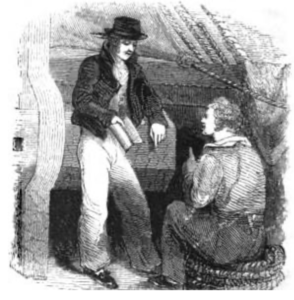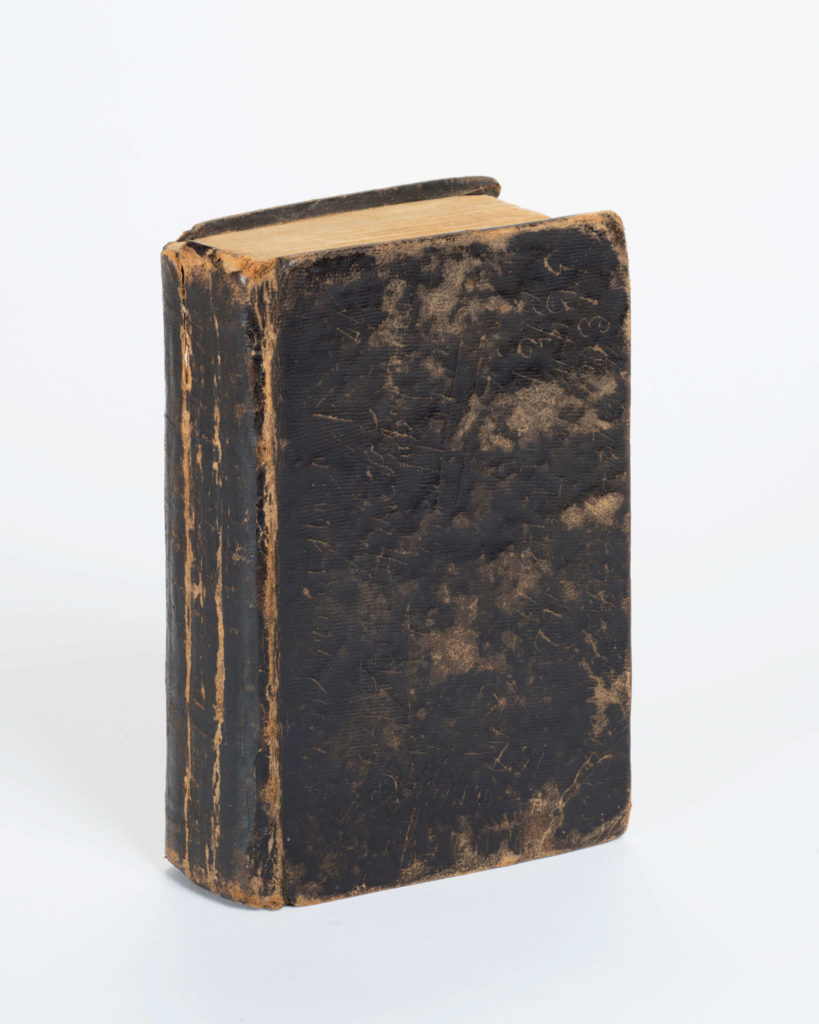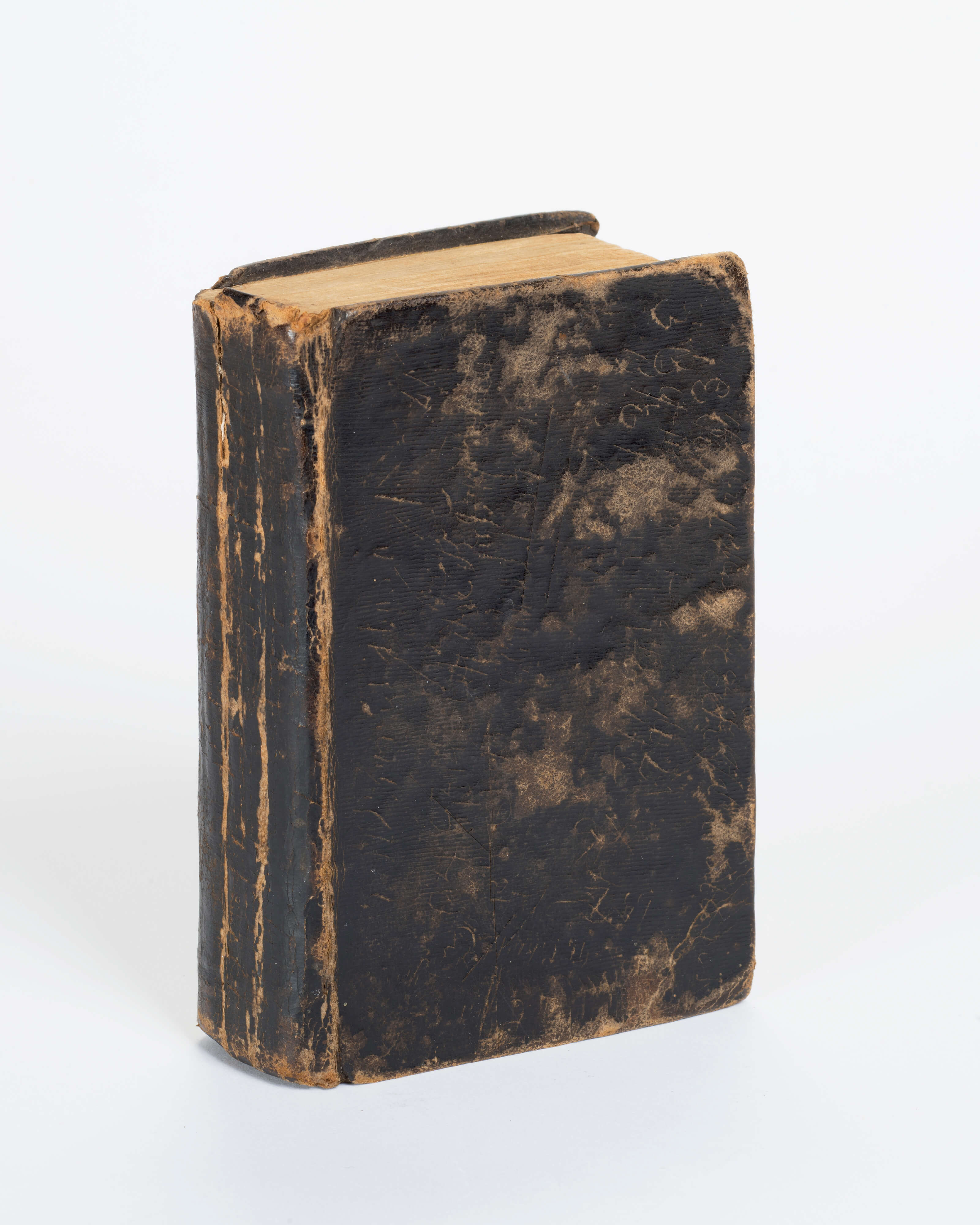“No country on the face of the earth can boast of a larger proportion of inhabitants, versed in the rudiments of science, or fewer, who are not able to read and write their names, than the United States of America.”
-The Columbian Phoenix and Boston Review, 1800
When we talk about literacy in early New England, it frequently conjures a grim but persistent image, one in which dour Puritans read nothing but the Bible, and the mass of the people can’t read at all. As always, reality was much more colorful and complex.
New England enjoyed a thriving book trade as far back as the 17th century, and by the turn of the 19th century, that trade had exploded. This growth occurred at time when literacy rates began to soar. Using records that skew the statistics in favor of white male property owning individuals, some historians have discovered nearly universal literacy among men in the region during the late 18th century. Other records, which take into account the poor or “transient,” have found that about 66.8 percent of all males (and 77.1 percent of white males) could read and write.1
This growing literacy has been attributed in part to the existence of, and access to, public school education. The bulk of New Englanders probably did not compose sonnets or pen novels in their spare time, but functional literacy, the sort that let a tradesman keep accurate accounts books or a woman send a letter to her parents, seems widespread.
All this begs the question; did this level of literacy extend down the social ladder to common seamen?
We have no fail safe way to accurately determine literacy rates among sailors. In 1976, maritime historian Ira Dye argued that there was a strict correlation between signature quality and level of education, and hence literacy. By looking at seamen’s protection certificates (a sort of passport and birth certificate in one) Dye estimated that about 70 percent of merchant sailors were able to sign their names during the 1812 to 1815 period.2


How can we say with any certainty that this was true for Constitution’s crew? Luckily, there is a document that has the potential to offer the beginning of an answer. It is a power of attorney from the officers and crew to John McCauley, authorizing him to act as prize agent for them.3 It was signed at sea on February 18, 1815, and records the marks or signatures of every member of the crew.
Not surprisingly, 100 percent of the commissioned and warrant officers could sign their names. The petty officers were a different story, however. Only 56 percent of them could sign their names, but this percentage varied according to station. Ninety-one percent of the quartermasters, for instance, signed their names, while only 13 percent of the captains of the tops, hold, afterguard, etc. signed theirs. About 78 percent of the Marine sergeants and corporals signed their names. When we reach the common seamen, the numbers deviate from Dye’s findings. Of the 207 able seamen listed, only 40 seamen, or 19 percent, signed their names to the document. Surprisingly, the ordinary seamen surpassed the able seamen with 32 percent of this group signing their names. At the same time, 29 percent of the boys offered a signature (although, with only 14 boys on board, the sample size may be too small to be statistically significant). Perhaps the greatest surprise came from the Marine privates, 24 percent of whom signed their names to the document.
Leaving the officers aside (and perhaps the petty officers as well) we may infer that there was an inverse relationship between length of service at sea and the ability to sign one’s name. Could it be that those who had attained the rate of able seaman as of 1815 had gone to sea at a younger age, and therefore had not received the same level of education as men who joined the service in a lower rank or at a greater age? At the same time, the fact that these able seamen continued in the service for a longer period may be a function of their lack of literacy — they would have a difficult time finding better-paying employment without being functionally literate. For the Marines, the higher rate of functional literacy may be explained by the fact that 40 percent of them had worked as artisans or craftsmen before the war. They were probably used to keeping accounts and signing receipts.
The numbers reveal some truth in seaman Samuel Leech’s often-quoted remark: “Many of my shipmates could neither read nor write…[and] were dependent on the kindness of others, to read and write for them.”4 Then again, contemporary American sources point to a love of reading among naval seamen. Chaplain George Jones, who served on Constitution in the 1820s, reported that sailors “will frequently come for ‘some pleasant book to read;’ and I have frequently regretted the want of such. Small histories, and story books will be most acceptable”5
British seaman Aaron Thomas, who kept an incredible diary of his life on board a Royal Navy frigate in the late 1790s, read prolifically. One Sunday in December 1798 he spent all day reading. Another Friday and Saturday, he employed his time “in reading the Public Dispatches of General Washington; written to Congress during the War with America.” In another entry, he mourned the loss of books to the damp shipboard environment: “Books are truly perishable things. What numbers have I had spoiled since I came afloat. This day I sent ashore to Mrs Wainrights, the history of Corsica, printed in Italian in Naples. My Turkish & Italian grammar Horcices Odes, and several other Books, all spoiled by Salt Water geting into the Chest in which they were kept.”6


Perhaps the Christian Herald and Seaman’s Magazine summed up sailors’ reading habits the best: “Sailors love to read of the sea, of ships, of seamen, and every thing connected with their profession. Sunday Schools, and the progress of education, will render them generally a reading class of people. They have much time. If we don’t find them good books, Satan will provide them with bad ones.” Whether Jack Tar held the same opinion is another matter.7
______________________
1 For a summary of these findings and the bias in the records, see Ruth Wallis Herndon, “Research Note: Literacy Among New England’s Transient Poor, 1750-1800,” in Journal of Social History, vol. 29, no. 4 (Summer, 1996), 963-965.
2 Ira Dye, “Early American Merchant Seafarers,” Proceedings of the American Philosophical Society, vol. 120, no. 5 (October 15, 1976), 331-360.
3 “Power of Attorney for Officers and Crew to John McCauley to collect Prize Money for them on account of Captures made by the Constitution. Signed at sea, February 18, 1815.” RG 45 Box 769 XZ Subject Files USN 1775-1910, National Archives and Records Administration.
4 Samuel Leech, Thirty Years from Home or A Voice From the Main Deck (Boston: Tappan & Dennet, 1843), 104.
5 George Jones, Sketches of Naval Life: With Notices of Men, Manners, and Scenery on the Shore of the Mediterranean, in A Series of Letter from Brandywine and Constitution Frigates, vol. 2 (New Haven: Hezekiah Howe, 1829), 242.
6 Aaron Thomas, The Caribbean Journal of a Royal Navy Seaman, Elizabeth Locke and William E. Brown, Jr., eds. [book online] (Coral Gables, FL: University of Miami, 1999, accessed July 20, 2006), 20, 195, 238.
7 The Christian Herald and Seaman’s Magazine for the Year 1820-1821 (New York: E.B. Clayton, 1821), 30.
The Author(s)
Matthew Brenckle
Research Historian, USS Constitution Museum
Matthew Brenckle was the Research Historian at the USS Constitution Museum from 2006 to 2016.
